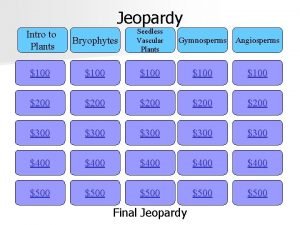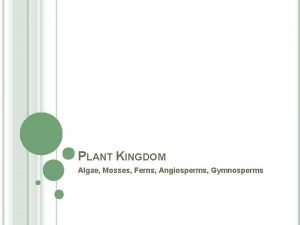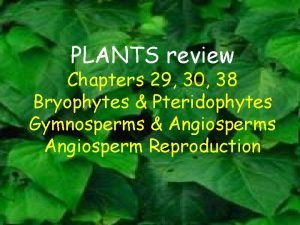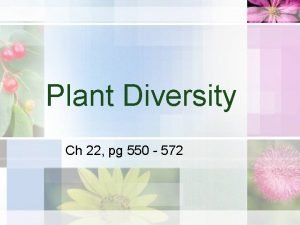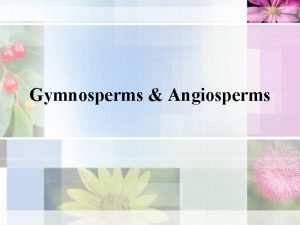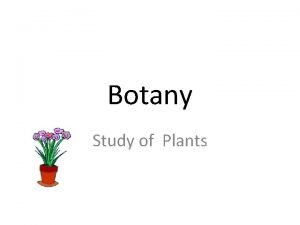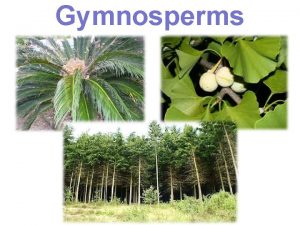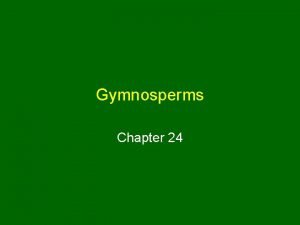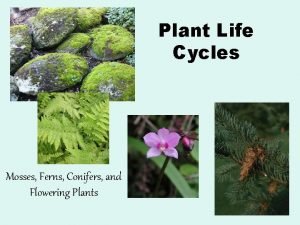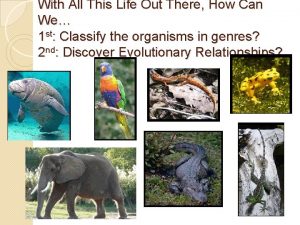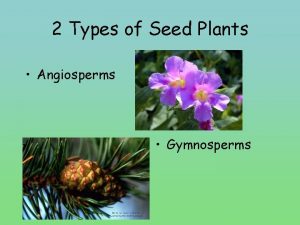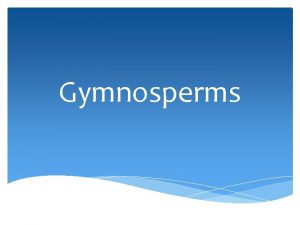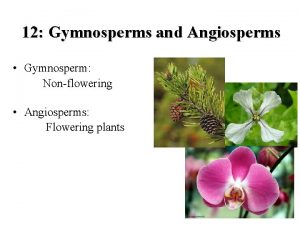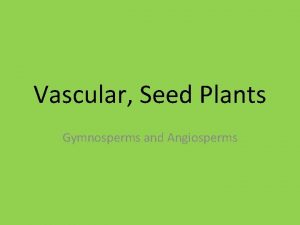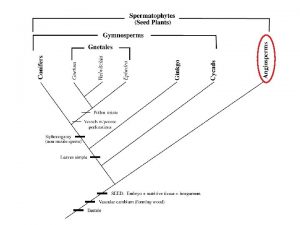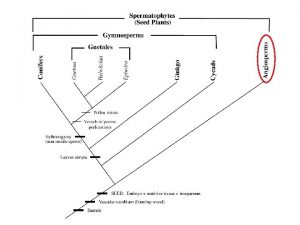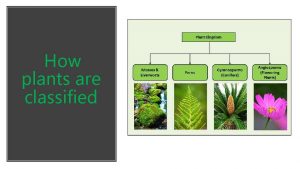Plants Mosses Gymnosperms Angiosperms Nutrition p p All










- Slides: 10

Plants: Mosses, Gymnosperms, Angiosperms Nutrition: p p All are autotrophic, using sun to convert inorganic molecules (CO 2 and H 2 O) into organic food molecules in the form of glucose (C 6 H 12 O 6). Oxygen (O 2) is released in the process. Chlorophyll contained in chloroplasts are the primary pigments responsible for photosynthesis…. . that’s why plants are green.

Synthesis p p p Photosynthesis (see previous slide) Cellular Respiration: plants need ATP too! They use some of the O 2 and glucose that they produce from photosynthesis to synthesize the ATP they need. Plants also assemble larger molecules by dehydration reactions.

Respiration p p Plants like all living organisms must exchange gases Plants release O 2 from their leaves. In particular, on the underside of leaves a specialized structure called a stomata opens and closes to release oxygen, water vapor and to allow CO 2 to enter. The stomata complex includes two guard cells, and the stoma (opening) Guard cells open and close depending on the presence of water. When water is abundant, the guard cells remain open, and vice versa.

Transport: Mosses p p Water and nutrients must be moved throughout the moss plant Mosses are non-vascular, no specialized structures for this process Water and nutrients enter the “rhizoids” via osmosis and diffusion These substances continue to move throughout the plant by these methods. This limits their size.

Transport: Gymnosperms & Angiosperms p p p Plants must move water and nutrients from their roots to the rest of the plant Water and nutrients enter the plant through roots by osmosis and diffusion Phloem: transports nutrients (food) Xylem: transports water These structures allow the plants to grow much taller than non-vascular plants

Excretion: p p Plants must remove wastes and control water levels w/in the plant Oxygen is a waste product already discussed during respiration The most important excretory process in plants is transpiration, the removal of water vapor from leaves. The stomata are the excretory “machines” in the plant. They will open and release water vapor when plenty of water is available. They will close and retain water when water amounts are low.

Reproduction p Mosses: n n n No “male & female” structures, they are called “+ and -. ” Water is required Sperm must swim to eggs in order for fertilization to occur • Gymnosperm: “Naked seeds” • Pollen in male cones, eggs in female cones • Wind carries pollen to eggs • Embryos are not protected in fruits p Angiosperms: flowering plants n n n Flowers contain reproductive structures Pollen in anthers Eggs in ovule Pollination by insects, birds Once fertilized, embryo is surrounded by fruit used for protection and later for fertilizer.

Growth & Development p Mosses: n n n Alternation of Generations Gametophyte (haploid) is dominant stage of life cycle After fertilization, embryo grows into sporophyte that produces the haploid gametes

Reproduction Cont’d p Gymnosperms & Angiosperms n n n Alternation of Generation The seed germinates and grows into the sporophyte (diploid) which is the dominant stage of life cycle (the tree you see) The gametophytes are much reduced. They appear as the cones or the anthers/ovaries where the pollen and eggs are found

Regulation p p Plants respond to their environment called tropisms. These tropisms are controlled by hormones n n n Auxins: controls phototropism, bending toward light and gravitropism, growing down due to gravitational pull Gibberlins: stem elongation, germination, dormancy, flowering, sex expression, enzyme induction and leaf and fruit senescence Ethylene: controls ripening of fruit
